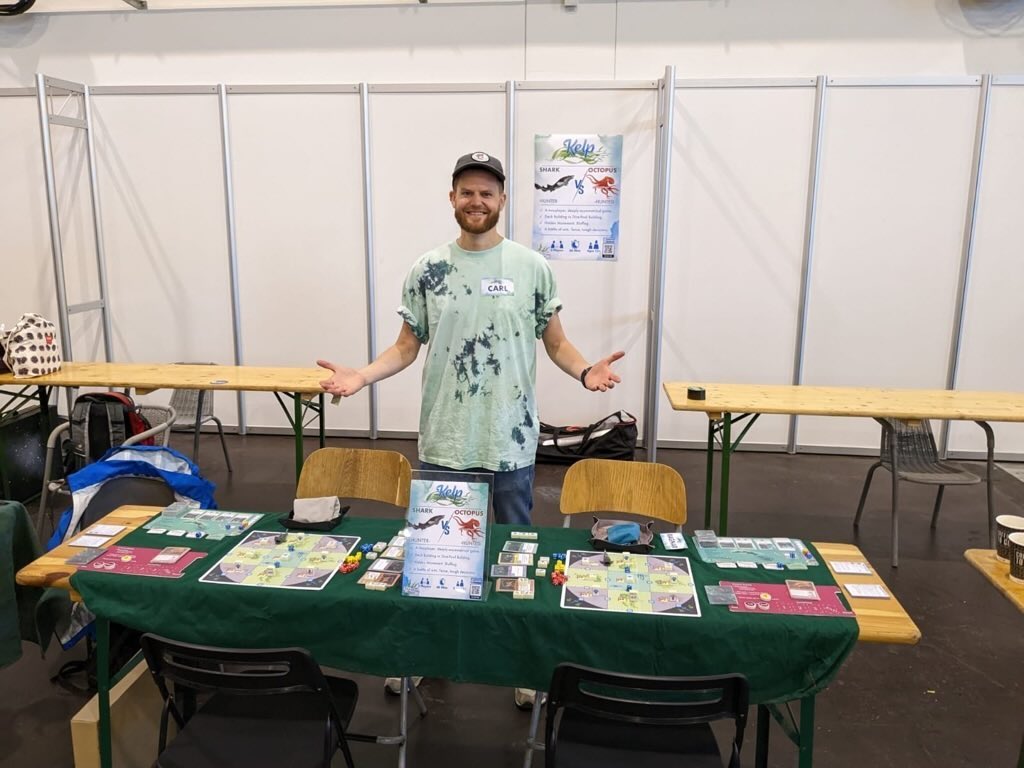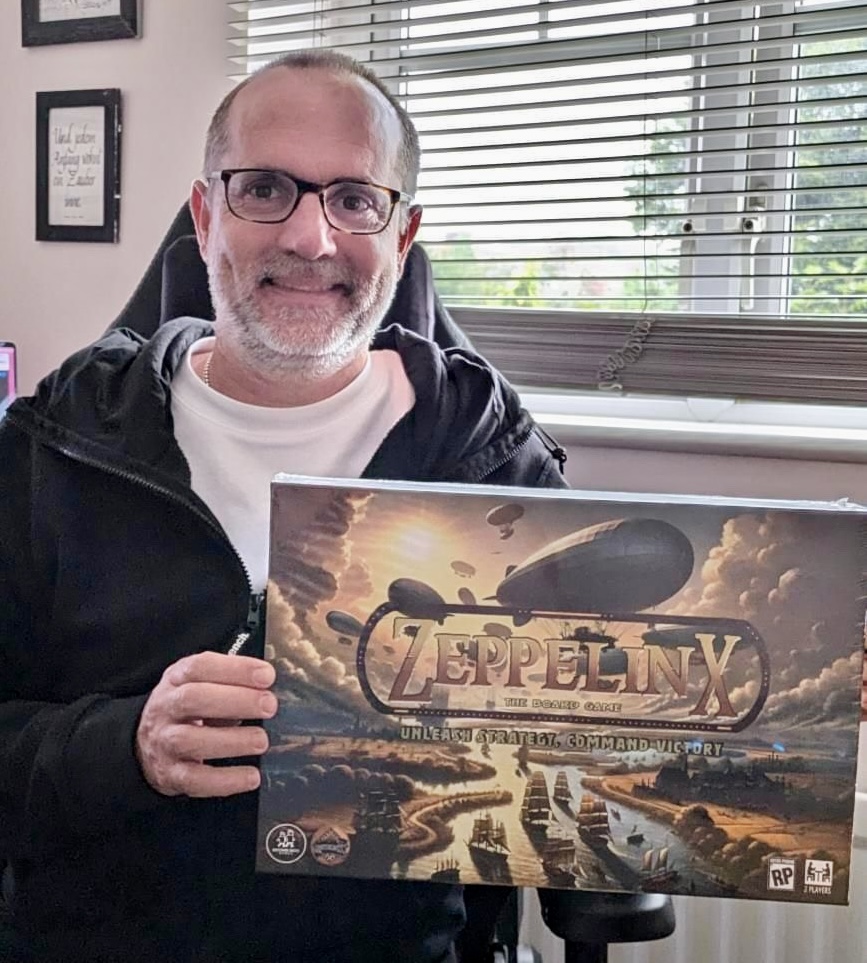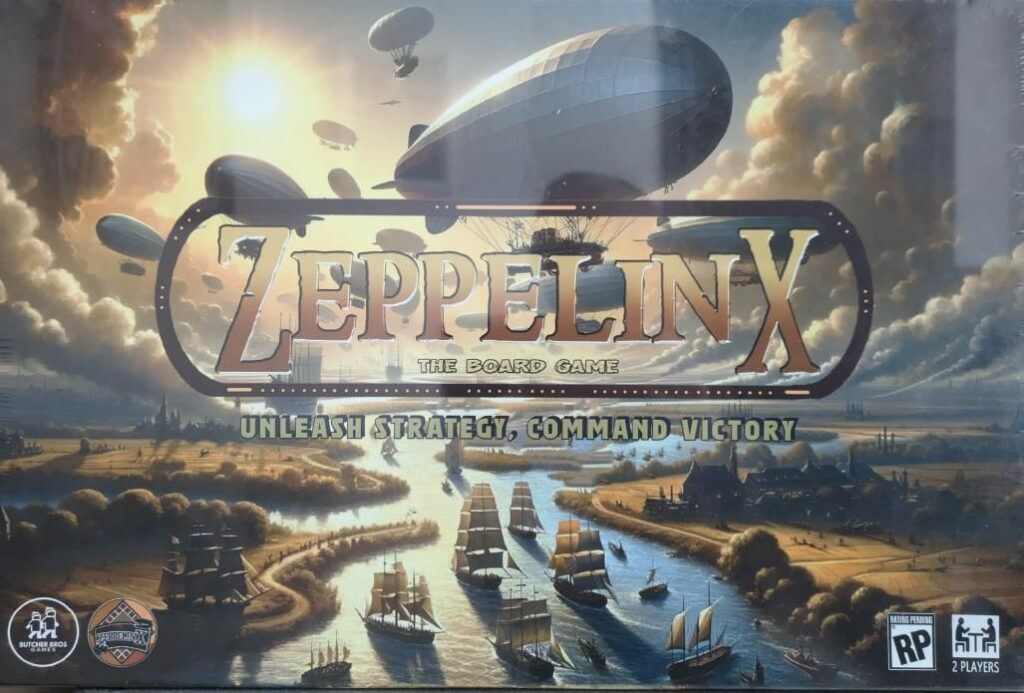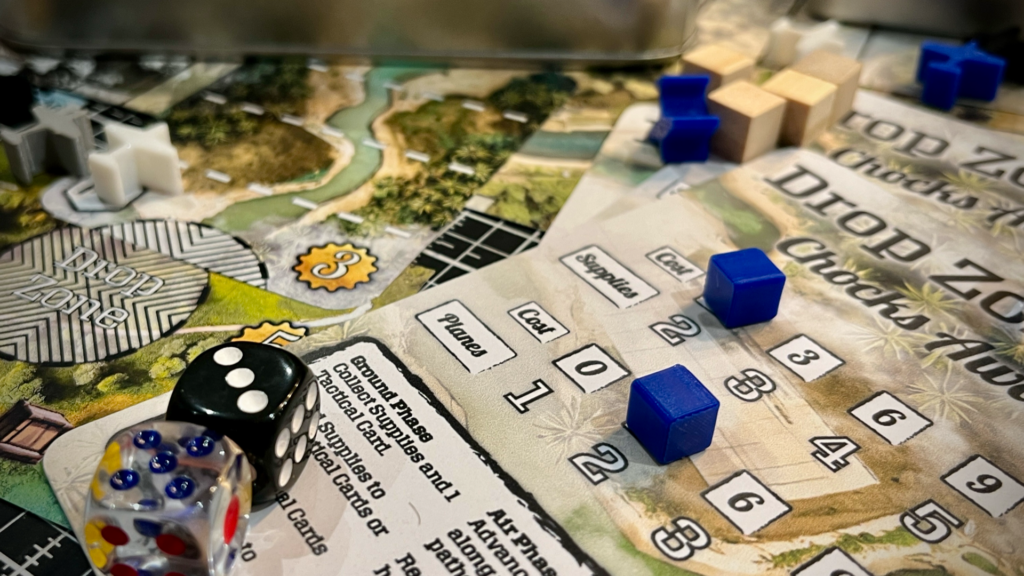
This is a new series for the blog – perspectives – no input from me, just two wonderful designers setting out there stall for the choices they’re making about publishing their games. Each designer will open with an explanation, then get a followup question from their co-collaborator, with an opportunity to respond.
Today it’s Carl (creator of Kelp) and Dirk (Butcher Brothers Games). Carl is working with a publishers, Dirk intends to self-publish.
Over to Carl…
Carl: It was always in my mind that I would search for a publisher for my games. When my game – Kelp started to develop to a point that I felt had enough potential to be publishable, I started looking for publishers that I thought would be a good match. I already had a good sense of publishers in the industry, just from being a board gamer for the past 12+ years, I started by looking at my own collection and then searching to see if some of my favourite publishers were accepting submissions or not. Cardboard Edison has a compendium of publishers, how to contact them and the kinds of games they are looking for with submissions, and although this is sometimes out of date, it was a useful starting point.

I contacted around 20 publishers over the course of a few months in the spring of 2022, plenty of time before I planned to be at the Author’s Workshop (protozone) at Essen Spiel in fall of that year, giving them my elevator pitch, sell-sheet and letting them know that I would be available to meet there if that was convenient. I kept track of my communications in a spreadsheet, noting when I had sent a communication, what I sent, what the reply was, and then any next steps necessary. I received some positive feedback, quite a few rejections but also some invitations to meet at Spiel. If you want to read more about my experience of presenting, pitching and getting my game signed in further detail in this Instagram post.
The TLDR for that post is that I was very fortunate to meet the team from Wonderbow at Essen Spiel, and after hearing my pitch, testing the game and having some discussions they signed the game. Almost two years later, a successful Kickstarter in the bag, and a gorgeous looking game on the way and I can confidently say that they have been a fantastic publisher to work with and that the experience for me has been a great one. I think a part of that is down to the fact that they are a relatively new and small publisher, who have poured a massive amount of passion, energy and resources into the project, probably above and beyond what a larger publisher might do.
They also took some risks, taking on Kelp (given its component count, and it is an asymmetric 2-player game). Though they were a newer publisher to board games (this was only their second project) the team had years of experience in marketing, producing and publishing in other areas, and they are also passionate and knowledgeable gamers themselves.
If you are interested in going down this route to publication, and I can leave you with a piece of advice it is that you have power in negotiation, and that you can and should ask for certain clauses to be included in your contract (among others: a termination clause, an advance royalty payment, an increased royalty percentage for sub-licensed versions and digital sales, and the right to audit their accounts to validate sales figures, are all clauses you should consider negotiating for.)
you have power in negotiation, and that you can and should ask for certain clauses to be included in your contract
Carl
Dirk: Sounds like you took a really considered approach to finding a publisher and that your legal knowledge was strong or at least really well researched. How did you know to look out for things such as ‘termination clauses’ and ‘royalty percentages for sub-licensed versions’?
Carl: Well, I started with an advantage I must say, in that I have a lawyer in the family and she helped me a lot, but I also did a lot of my own research via game design podcasts and blogs. I read a super useful thread by Matthew Dunstan on Twitter/X about royalties for digital versions in the age of Board Game Arena and the like, and I sent some PMs to a couple of designers that I’m connected to asking them a specific question or two. Some of the clauses I have discovered since (like the right to audit the publisher’s books) so I’m still learning too. I think a really good resource now is the newly formed Tabletop Game Designers Association (TTGDA).
Dirk: Your art style is really beautiful and strong, how much involvement did you have in selecting and approving the look and feel of your product? If there were disagreements with the publisher in direction or ideas how were those resolved?
Carl: Fortunately, Wonderbow are a small team and they were keen in involving me in the publishing process at certain points, asking me for my input on the potential artstyle and artist for the game. Together we put together a mood board and some inspiration, and then we each independently compiled a list of artists we would love to see work on it. From those lists, Wonderbow shortlisted any which crossed over between lists and then started to contact some of the artists to see if they were available and interested. I’m absolutely delighted that Weberson Santiago was available and excited to work on Kelp and he did an outstanding job.
I know some designers fear that a publisher will always want to re-theme the game and put art on it which they don’t like, and this may happen, but in my case I’m pleased to say that Wonderbow really valued and respected my input, but also they are experts in this area and so equally, I valued and respected their input just as much.
Now over to Dirk…

Dirk: We’re determined that we want to self-publish for a few reasons. The main one being; that we want to remain in full control of the content, creativity and all business decisions relating to our product, Zeppelin X.
In our day jobs, we’ve spent plenty of time working for other people and following another direction than our own. Producing high quality Butcher Brothers Games is something we’re passionate and excited about owning ourselves.
Looking for a publisher or raising funding feels a bit like the choice is out of your hands and that you’re dependent on an external factor to bring your product to life. Even though we’re pretty sure it will be challenging and we will make mistakes, we’re okay with that. We’re happy to learn and iterate as we go. Of course there may be partners where it’s a really positive experience, but for now we’d like to keep ownership of as much as we can.
Even though we’re pretty sure it will be challenging and we will make mistakes, we’re okay with that
Dirk
There’s a lot of challenges we’ve come across already, where we are learning how much we don’t actually know. Simple things like the size of your box, the size of your actual board, what are the pieces made out or? How should the pieces feel, how should they be stored? How are the rules defined and displayed? What works and what doesn’t, when and how can we test this out?
We’ve been learning as we go, looking at other games for inspiration, making it a clear goal to play as many games as we can. Understanding we will want to do a prototype first, test that out and see where the challenges are and what changes will be required.
The other challenging but exciting thing has been the look and feel of the game, figuring out some brand consistency and what we want the product ‘look’ to be, and what we don’t want. Defining the genre in a fantasy setting is amazing because it gives you a lot of freedom, however you need to ring fence some of that. Ensuring you’re not pulled into too many different directions so that there’s no focus in your style and setting.
We’ve ended up going for a fantasy steam-punk style look and feel. At least that’s the best way we can describe it. That suits Zeppelin X well, and we want to make the game challenging but keep the look and feel light hearted and appealing. If it’s too dark and war-like we think that’s the wrong feel for this product. It’s been great to explore and fine tune this and having this freedom to define it ourselves has been really exciting in some ways liberating.

Also, liking board games and knowing about them doesn’t actually mean you know them well! In the sense that it’s fun to play and follow someone else’s design, but doing your own is a challenge on a whole different level. We’re aiming to be humble and learn as we go.
The really lovely and surprising thing for us, coming from other competitive fields, is what an amazing supportive community it has been. We went to the UK Games Expo in May 2024 and everyone we talked to was so kind with their time, advice or sharing their own content.
It’s been a lovely introduction for us, a steep learning curve for sure and we’re excited to dive deeper into every part of the game production process as we go.
Carl: It’s great to hear your enthusiasm and approach, and I’m intrigued by how you are striving for brand consistency and ring-fencing your theme. What are some of the ways you are pushing outside of the boundary you have set for yourself, and what are some of the things you’ve tried to rein in?
Dirk: What we’re really careful with is having something that looks as close to ‘aspirational fantasy’ as we can get. I I know that’s a slightly high-brow term, but generally wanting to create a look and feel in a world where people would like to spend time engaging with it. Something that’s bright and engaging vs dark, dingy and aggressive.
What we’ve tried to rein in is that there are some elements of combat in our game, but we prefer to represent this simply like a chess game would vs making anything aggressive or visually violent. All our cards, and anything that’s visually seen, we aim to keep a consistent look. Something that’s engaging and interesting, but not super realistic in its representation of a Zeppelin being downed, or a ground troop captured/eliminated.
In terms of where we’re being pushed, I guess is using external resources to create much of our artwork, it’s us as a team discussing what works and what doesn’t. It’s actually a really good point that we haven’t clearly defined our look in writing, other than we both are aligned in having a strong sense of what it is. We’ve not expressed it. Perhaps this is a good nudge in that direction.
Thank to both Carl and Dirk for exploring this topic today, you can find them both on Instagram, so please find and follow them, they’re making beautiful games!
There’ll be more excellent discussion from brilliant designers each week – subscribe, pretty please…


